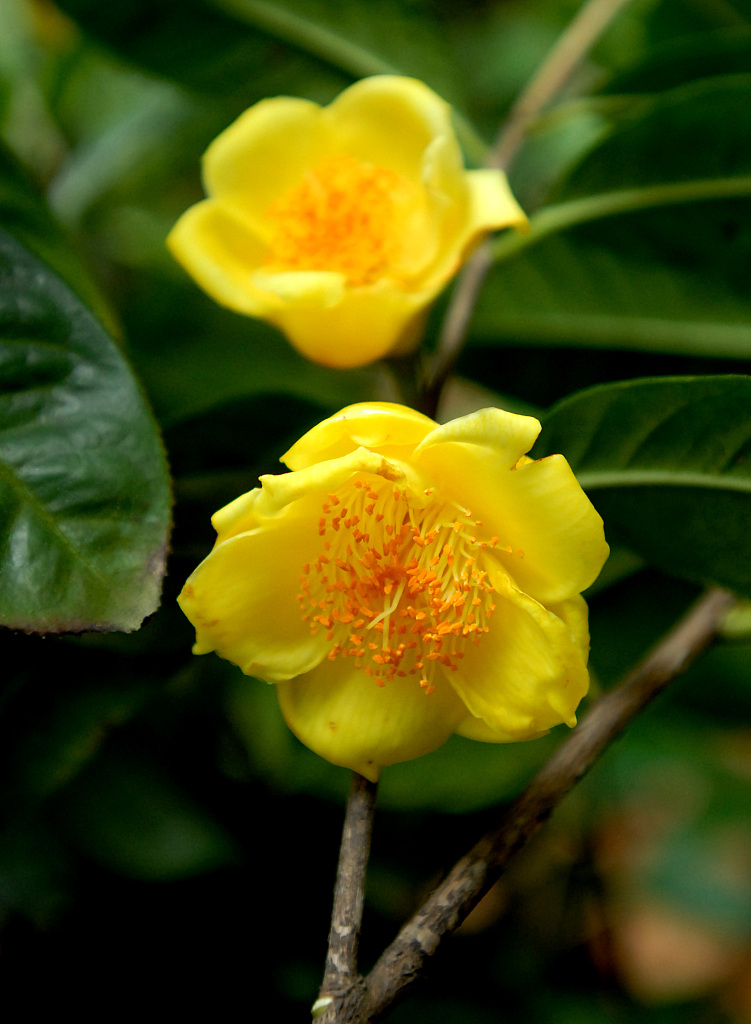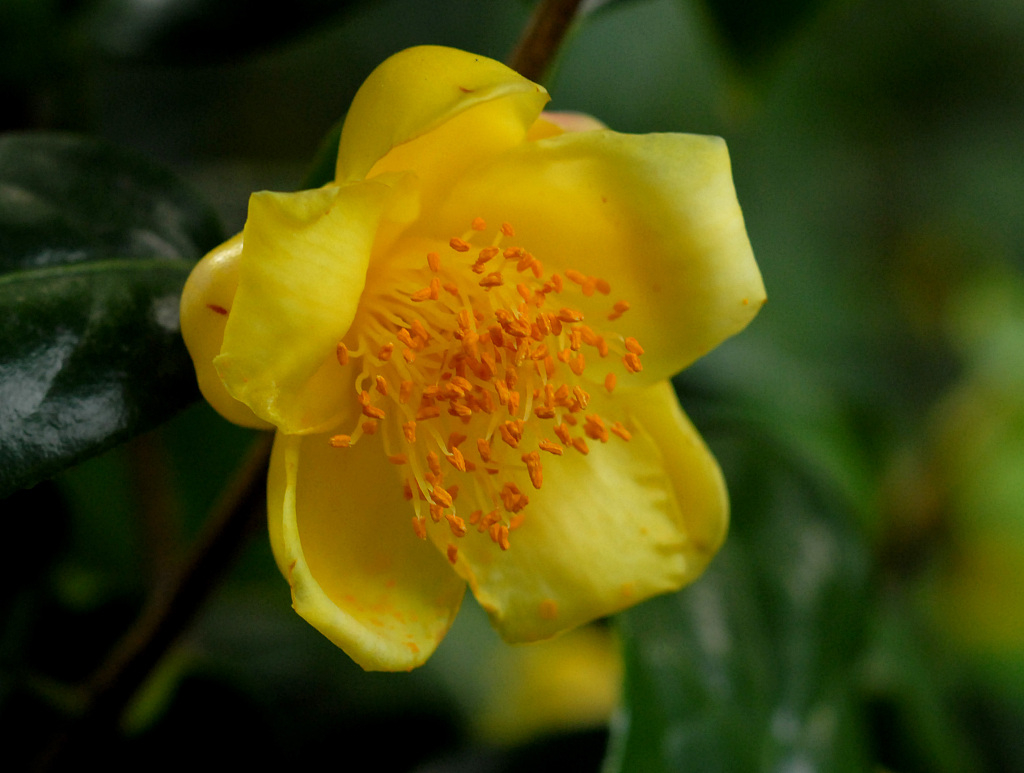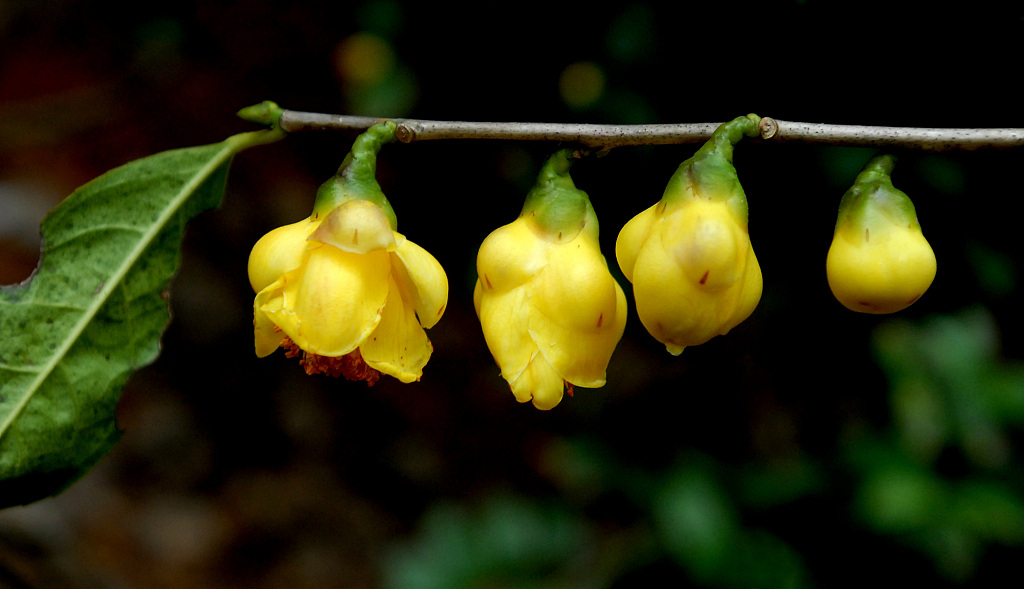
Having long been quietly growing and blooming in the shady and cool area in the dense forest in Fangchenggang City, Guangxi Zhuang Autonomous Region in China, goldflower tea suddenly became a superstar in the world of plants after it was first discovered by Chinese botanist Zuo Jinglie in 1933. Its name was first mentioned in the Compendium of Materia Medica, a book of Chinese herbal therapy written by Li Shizhen about 500 years earlier.

Blooming goldflower tea in Nanning City, Guangxi Zhuang Autonomous Region. /VCG Photo
Besides its medical significance recorded in the book, the plant also boasts as the only species in camellia to bloom in golden yellow as opposed to the typical white, pink, red, purple or even blue tea flower. Years of effort to find the plant had all ended up no avail, making people wonder whether the existence of goldflower tea was merely just the result of imagination until the discovery.

Blooming goldflower tea in Nanning. /VCG Photo
According to scientific research, the plant contains abundant elements, minerals and vitamins that are beneficial to our health.
Its unique color and beauty, medicinal potential as well as scarcity in the wild have earned the plant a reputation as the "panda of plants," which has boosted its market value drastically. A single two-meter-tall plant is well worth tens of thousands of yuan.

Blooming goldflower tea. /VCG Photo
The goldflower tea is under first-class protection in China.
China's Flora Tour
From the wetlands along the coast to the dense rainforests hidden in southwestern China, all boast an array of plant species. In this series, we will go on a tour to learn about some of the most representative flora in different provinces and see how they live in harmony with local geography and climate.
(Cover photo via VCG)
(If you want to contribute and have specific expertise, please contact us at nature@cgtn.com.)

Copyright © 2018 CGTN. Beijing ICP prepared NO.16065310-3
Copyright © 2018 CGTN. Beijing ICP prepared NO.16065310-3